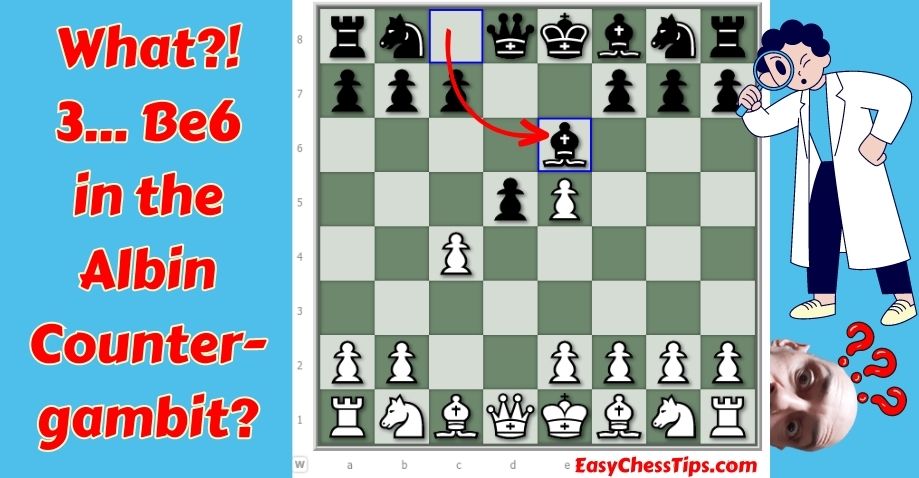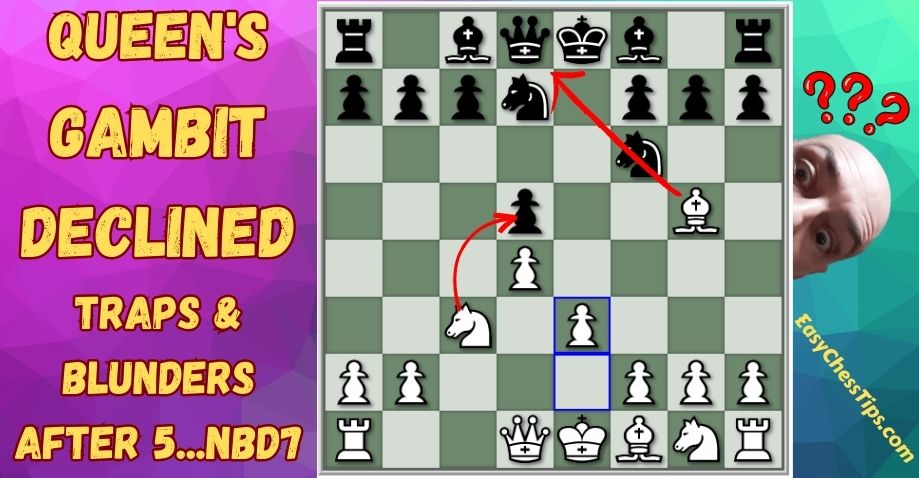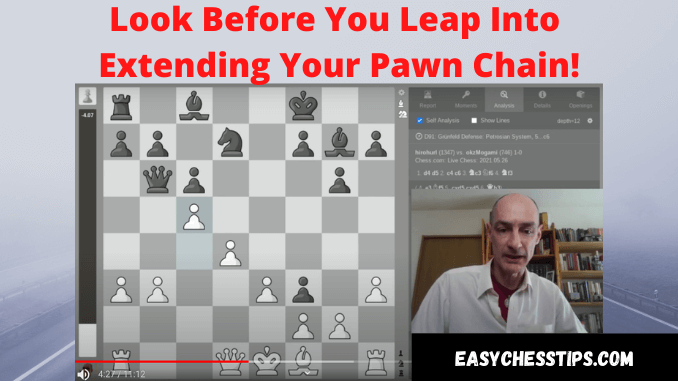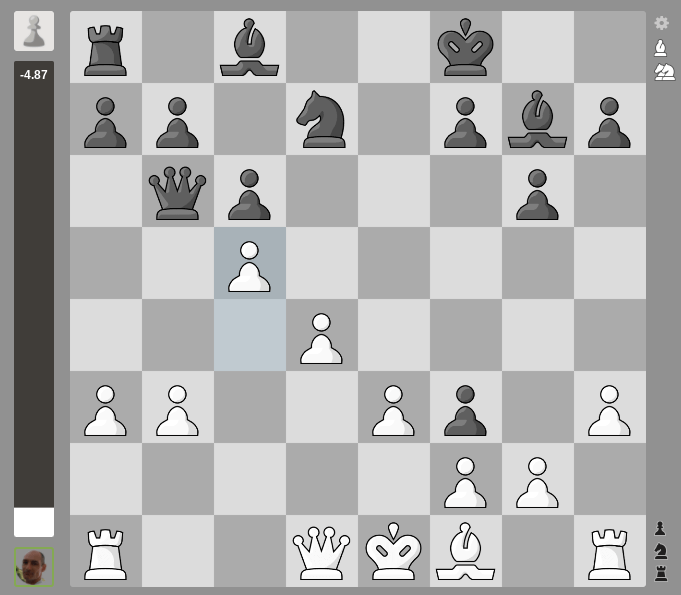
This is the second of my two-part mini series about the Albin Countergambit, based on a blitz game I played on Gameknot.com a few days ago.
In this video I go through the first few moves of the Albin Countergambit, which is a “counter gambit” to the Queen’s Gambit.
Next, I draw your attention to a trap that White must avoid on the 7th move and 8th moves.
The second half of the video looks at the Stockfish computer analysis of the blitz game that I played in the video that’s embedded in my previous blog post: easychesstips.com/what-3-be6-in-the-albin-countergambit
And here is the 2nd video in the mini-series:
The Albin Countergambit
Here are the opening moves of the Albin Countergambit, as expounded by John Watson in his book, A Strategic Chess Opening Repertoire for White (pp. 54-55):
- d4 d5
- c4 e5
- dxe5 d4
- Nf3 Nc6
- Nbd2 …
As can be seen, the point of the Albin Countergambit is for Black to advance his d-pawn to d4.
Against an inexperienced player, that could lead to a nasty little trap that White needs to avoid…
Continue Reading



